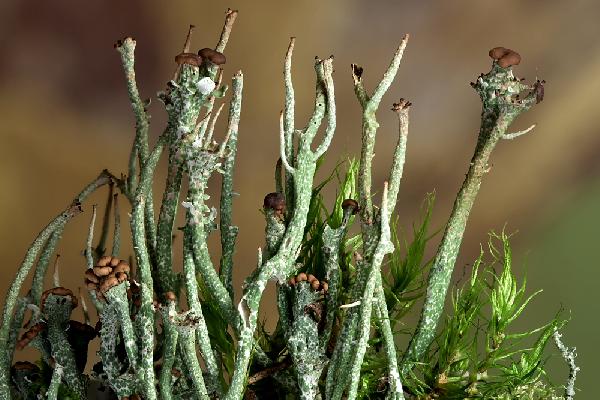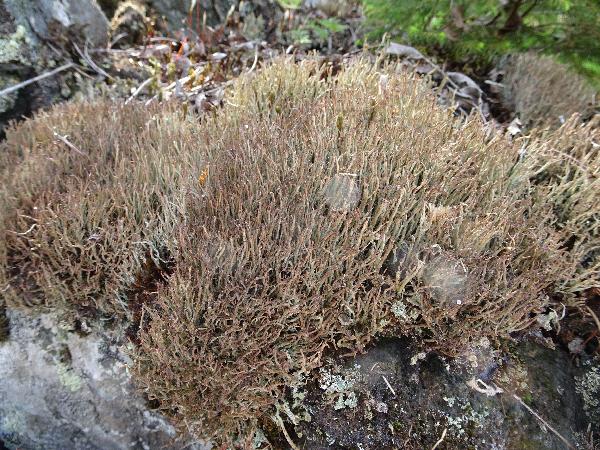Cladonia gracilis (L.) Willd. subsp. gracilis
Fl. Berol. Prodr.: 363, 1787. Basionym: Lichen gracilis L. - Sp. Pl., 2: 1152, 1753.
Synonyms: Cladonia chordalis (Flörke) Nyl.; Cladonia gracilis var. chordalis (Flörke) Schaer.
Description: Primary thallus squamulose, often persistent only at the base of podetia or ephemeral, the squamules ascending, small to middle-sized 2-5 mm long, 0.8-5 mm wide, irregularly crenate or lobed, glaucescent to olive-green above, white beneath. Podetia slender and elongate, hollow inside, greenish glaucescent in shade-forms to brownish grey or dark brown, non- or scarcely squamulose, 4-8(-12) cm tall, 0.5-1.5 mm thick (fertile podetia to 2 mm thick), unbranched or sparingly branched, pointed or with small, rapidly flaring, closed, toothed cups, smooth, corticate-areolate, the cortex continuous or disrupted into flat areoles separated by white lines. Apothecia rare, brown, convex, terminal or on the margins of cups. Asci 8-spored, clavate, thickened at apex, with a K/I+ blue tholus and a K/I+ strongly blue outer gelatinous sheath, Cladonia-type. Ascospores 1-celled, hyaline, ellipsoid. Pycnidia dark, semi-immersed, on the margins of the cups or at the tip of cupless podetia, with a colourless jelly. Conidia hyaline, curved. Photobiont chlorococcoid. Spot tests: K- or K+ yellowish slowly turning brown, C-, KC-, P+ red, UV-. Chemistry: substances of the fumarprotocetraric acid complex.
Growth form: Fruticose
Substrata: soil, terricolous mosses, and plant debris
Photobiont: green algae other than Trentepohlia
Reproductive strategy: mainly sexual
Commonnes-rarity: (info)
Alpine belt: rare
Subalpine belt: rare
Montane belt: very rare
Dry submediterranean belt: absent
Humid submediterranean belt: absent
Padanian area: absent
pH of the substrata:
1 2 3 4 5
Solar irradiation:
1 2 3 4 5
Aridity:
1 2 3 4 5
Eutrophication:
1 2 3 4 5
Poleotolerance:
0 1 2 3
Altitudinal distribution:
1 2 3 4 5 6
Rarity
absent
extremely rare
very rare
rare
rather rare
rather common
common
very common
extremely common
Loading data...
Occurrence data
Predictive map
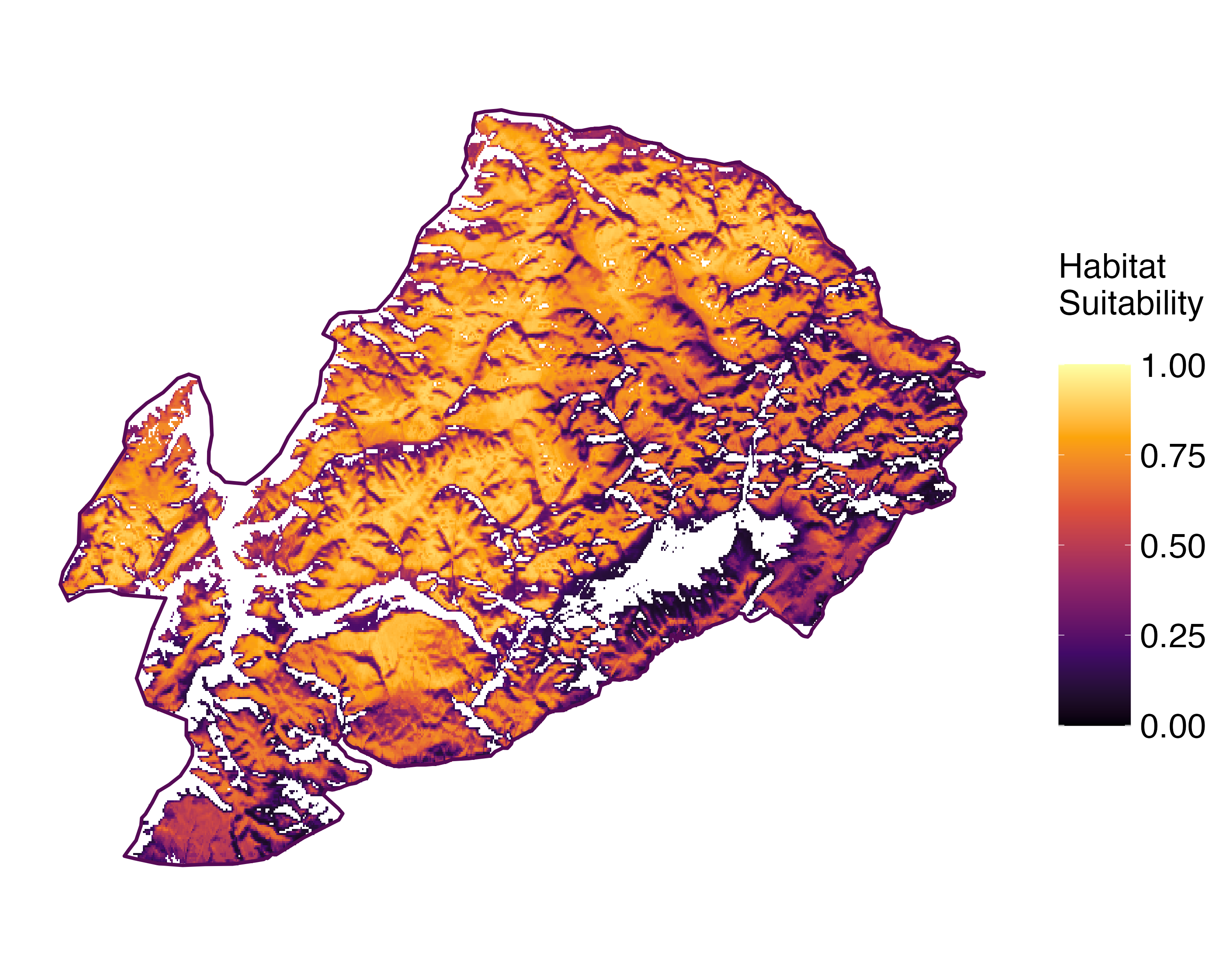 Current prediction (1981-2010)
Current prediction (1981-2010) Future prediction (2071-2100) SSP 1-2.6
Future prediction (2071-2100) SSP 1-2.6 Future prediction (2071-2100) SSP 5-8.5Predictive maps according to Francesconi et al. 2025
Future prediction (2071-2100) SSP 5-8.5Predictive maps according to Francesconi et al. 2025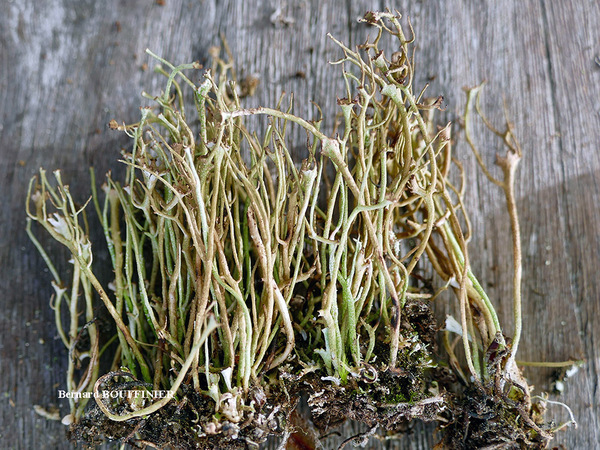
Bernard Bouffinier - Source: http://www.lichensmaritimes.org/index.php?task=fiche&lichen=306&lang=en
France, Menez, Kador
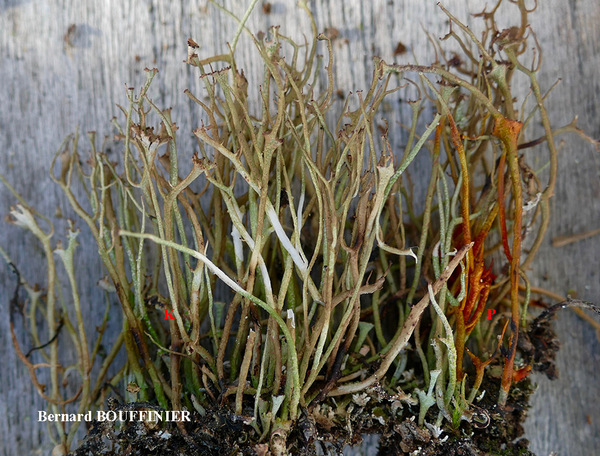
Bernard Bouffinier - Source: http://www.lichensmaritimes.org/index.php?task=fiche&lichen=306&lang=en
France, Menez, Kador
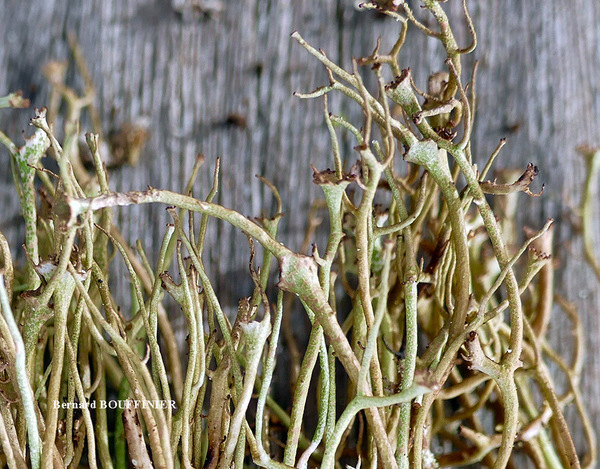
Bernard Bouffinier - Source: http://www.lichensmaritimes.org/index.php?task=fiche&lichen=306&lang=en
France, Menez, Kador
Growth form: Fruticose
Substrata: soil, terricolous mosses, and plant debris
Photobiont: green algae other than Trentepohlia
Reproductive strategy: mainly sexual
Commonnes-rarity: (info)
Alpine belt: rare
Subalpine belt: rare
Montane belt: very rare
Dry submediterranean belt: absent
Humid submediterranean belt: absent
Padanian area: absent
pH of the substrata:
| 1 | 2 | 3 | 4 | 5 |
Solar irradiation:
| 1 | 2 | 3 | 4 | 5 |
Aridity:
| 1 | 2 | 3 | 4 | 5 |
Eutrophication:
| 1 | 2 | 3 | 4 | 5 |
Poleotolerance:
| 0 | 1 | 2 | 3 |
Altitudinal distribution:
| 1 | 2 | 3 | 4 | 5 | 6 |
Rarity
absent
extremely rare
very rare
rare
rather rare
rather common
common
very common
extremely common
Loading data...
Occurrence data
Predictive map
 Current prediction (1981-2010)
Current prediction (1981-2010) Future prediction (2071-2100) SSP 1-2.6
Future prediction (2071-2100) SSP 1-2.6 Future prediction (2071-2100) SSP 5-8.5
Future prediction (2071-2100) SSP 5-8.5Predictive maps according to Francesconi et al. 2025

Bernard Bouffinier - Source: http://www.lichensmaritimes.org/index.php?task=fiche&lichen=306&lang=en
France, Menez, Kador

Bernard Bouffinier - Source: http://www.lichensmaritimes.org/index.php?task=fiche&lichen=306&lang=en
France, Menez, Kador



